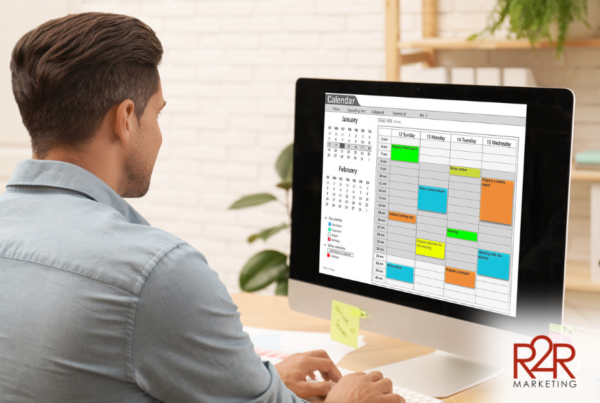Marketing pros will tell you your website, digital advertising and social media should generate inbound leads – potential customers that reach out to you, without any significant external sales effort. This is the dream of any business owner and sales manager – leads that just show up, ideally from a marketing formula that generates predictable results and measurable ROI.
At R2R, we help generate a lot of inbound leads for our clients, but we know that’s only part of the challenge. It’s not enough to have leads – the sales team has to act on them and treat them like the gold they are!
Inbound leads get missed for a variety of reasons, particularly if there aren’t good tracking mechanisms in place. Think about it – good salespeople track their contacts, appointments, closes, no-sales (or demo no-sales), and follow up on them. And good sales managers know the cost of each one of those contacts, whether they come from canvasing, events, cold-calls, appointment setters or the salespeople themselves. But if inbound leads aren’t tracked, they can slip through the cracks – web form submissions caught in a spam folder, chat requests missed because someone is out, Facebook comments that don’t get noticed.
Because inbound leads are high value, it’s vital to treat them well, and not give up if the first, second or even third reply goes unanswered. People get busy and may not have time to follow-up, but remember, if it’s an inbound lead, they contacted you – they already demonstrated a high level of interest. Your job is to make every effort to reply to their inquiry and either convert them to a prospect and customer, or nurture them for a future opportunity.
Here are a few tips to be sure your team maximizes inbound leads:
Respond Quickly: While few people expect a response at 11 pm when they submit an estimate request on your website, they certainly expect a reply on the next business day. Be sure overnight and weekend leads are getting to the right person in your organization and they follow-up promptly the next business day. Remember, though, the lead is probably working too, so leave a message if you don’t get them, so they know you called.
Respond with multiple methods: The best follow-up is nearly always by phone, but don’t stop there. Call the lead, but also reply in the same manner they contacted you. If they send a message through your site, call and send an email. If it was a chat request – call, send an email and reply via chat if your tool has that option. Facebook – reply to a comment, send a direct message and see if you can track down a phone number or email.
Keep Trying: Remember, they reached out to you, so it’s proper to follow up until you either reach someone or they ask you to stop calling. Be sure your scripts acknowledge you are following up on their inquiry, and let them know how they can tell you they’re no longer interested. If you’re in a competitive industry or area, you might get aggressive with the 5-4-3-2-1 strategy mentioned in our video (below). However, if someone says they’re no longer interested, you must honor their request and stop calling and contacting them.
Keep a Log: Keep track of the original lead and all follow-up attempts. This is both for salespeople accountability and overall tracking, and so you can see what is working and where there’s room for improvement. Too many salespeople stop after call number three. Don’t stop until you get an appointment, or a “no thanks.”
Remember, inbound leads are opportunities knocking at your door – make sure you have a process to welcome them into your business, or to follow up and keep them engaged if you’re not available when they knock.





